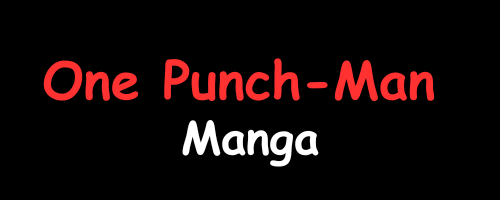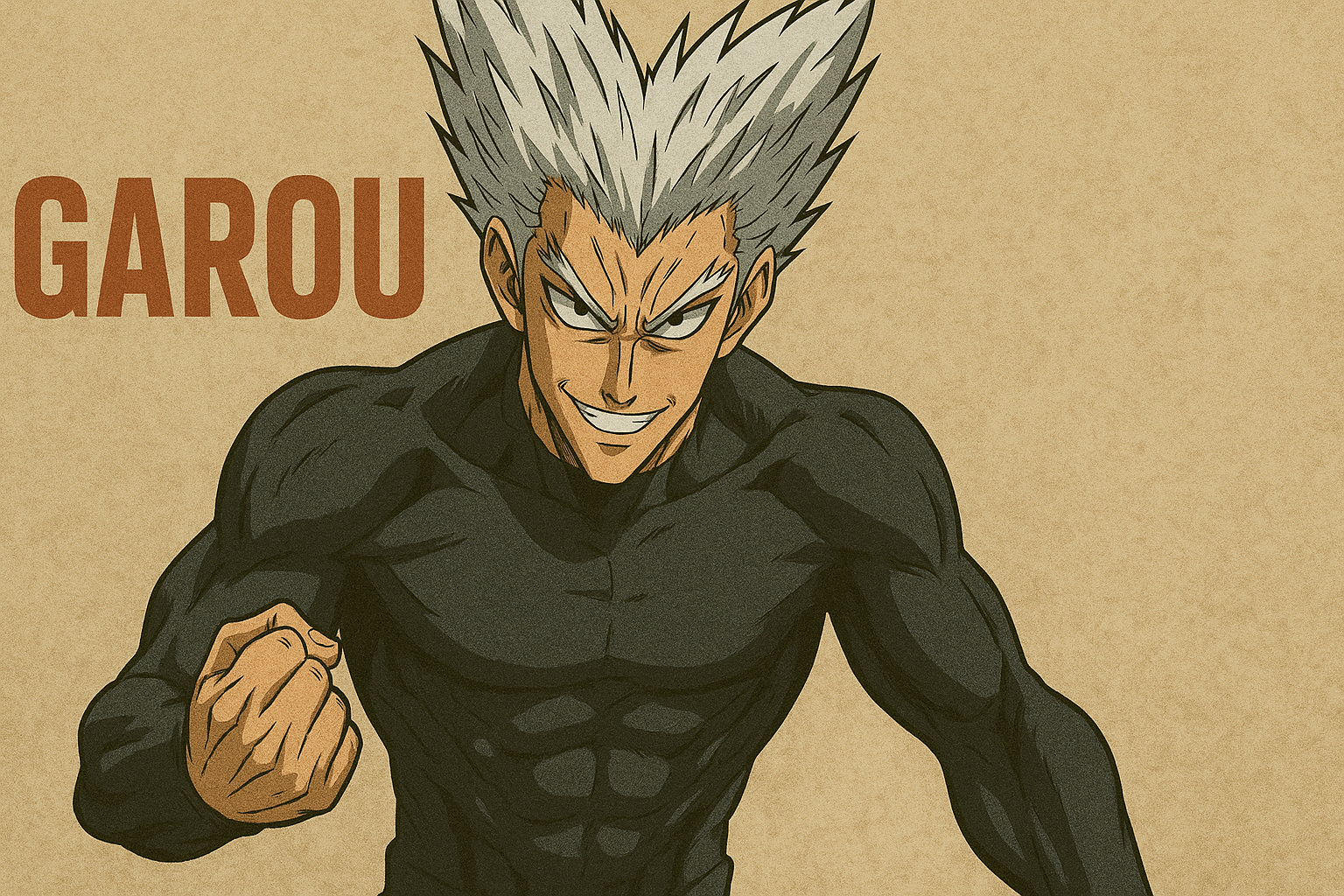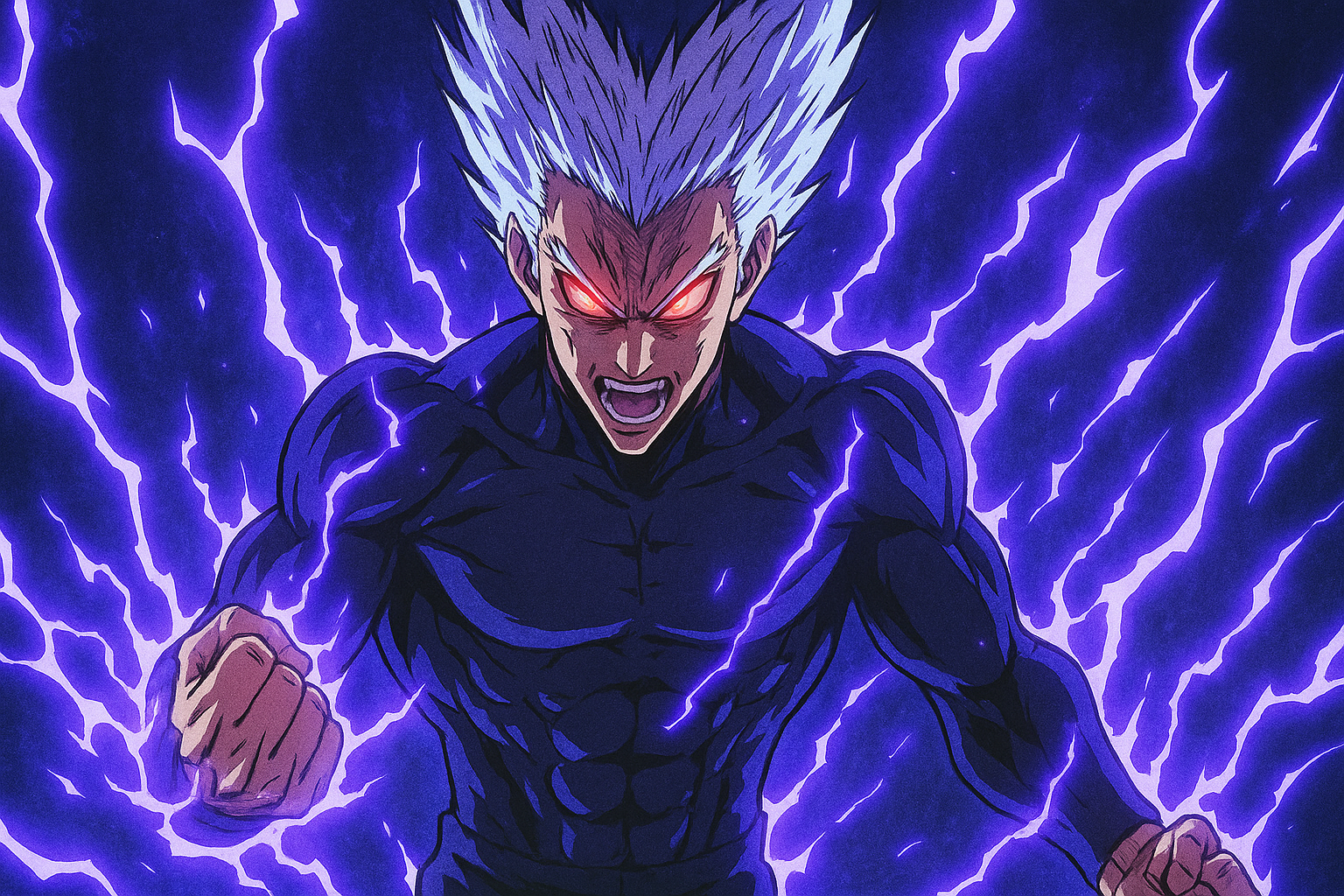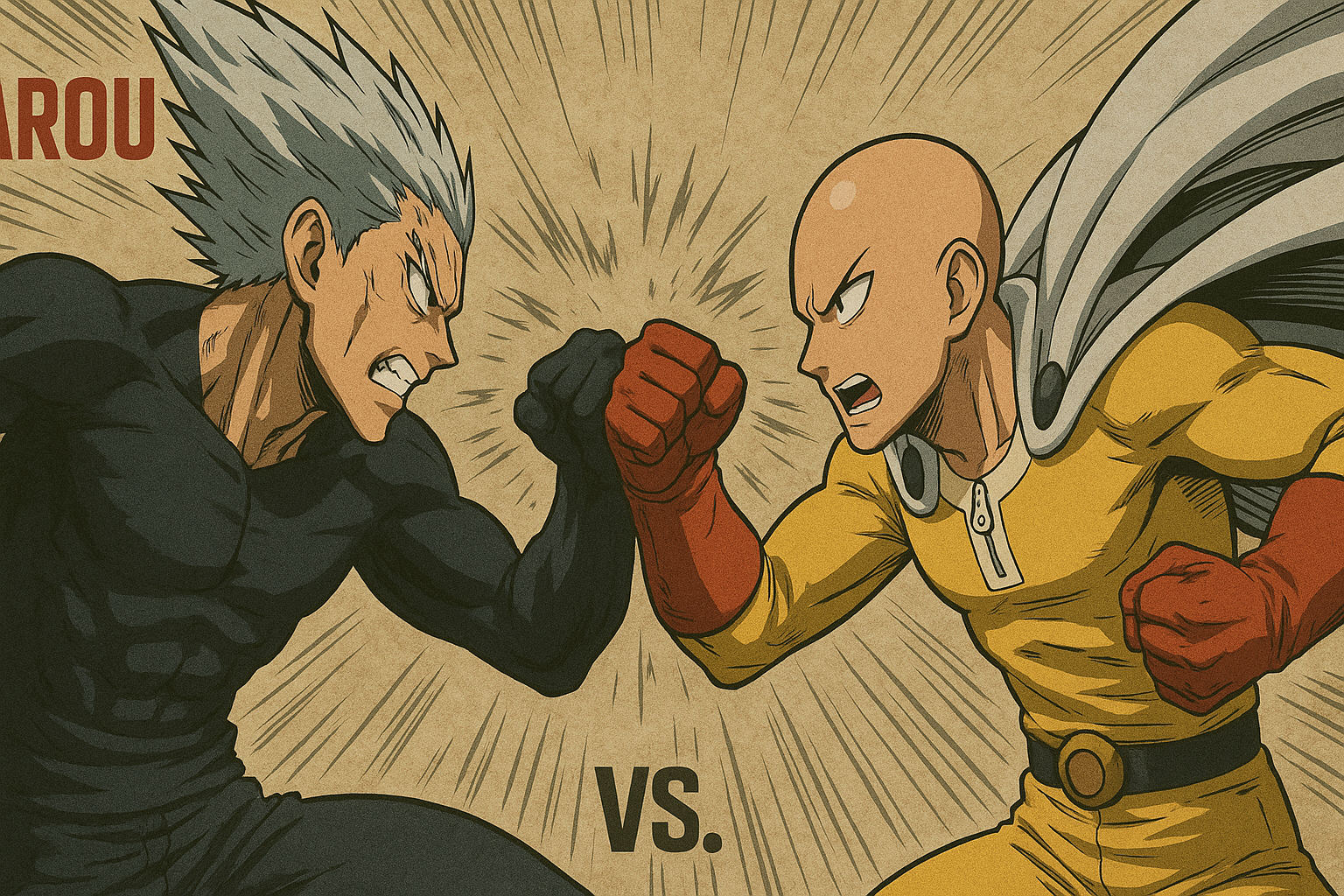Garou
Garou
The name “Garou” evokes a powerful and primal image: that of a human transforming into a wolf, a creature caught between two worlds, belonging to neither. It is a concept that has haunted human imagination for centuries, rooted in ancient folklore and evolving into a central figure in modern pop culture. While often used interchangeably with “werewolf,” the term “Garou” carries its own unique weight and nuance, particularly due to its prominent use in the globally celebrated manga and anime series, One-Punch Man. This article will delve deep into the world of the Garou, tracing its origins in mythology, exploring its complex portrayal in One-Punch Man, and examining its enduring legacy across various forms of media.
Etymology: Unpacking the Name “Garou”
The word “Garou” (狼, garō) is of Japanese origin, directly translating to “werewolf” or “fanged wolf.” It is a compound of the kanji for “to bite” or “fangs” (牙, ga) and “wolf” (狼, rō). This literal translation perfectly encapsulates the core identity of the creature: a ferocious, wolf-like being. In the West, “Garou” is often recognized from the French phrase loup-garou, which is their specific term for a werewolf, further cementing its cross-cultural association with lycanthropy.
The Mythological Roots: The Werewolf in Global Folklore
To understand the Garou, one must first understand the werewolf. The concept of human-to-wolf transformation is ancient and widespread. From the legend of Lycaon in Greek mythology, who was turned into a wolf by Zeus as punishment, to the Norse Úlfhéðnar, fierce warriors who wore wolf skins in battle, the idea of a man-wolf hybrid has symbolized untamed nature, savage strength, and a loss of humanity. These myths served as cautionary tales about the beast within all of us.
The Modern Archetype: Garou in One-Punch Man
The character Garou from the manga and anime One-Punch Man, created by ONE, is the most prominent contemporary bearer of this name. He is not a literal werewolf in the traditional sense but a human martial arts prodigy who adopts the moniker “Hero Hunter” and later, “The Human Monster.” His design, demeanor, and fighting style are intensely bestial, earning him the Garou title from the public and heroes he hunts.
Garou’s Backstory: The Bully and The Heroic Ideal
Garou’s motivations are complex and stem from a traumatic childhood. He was consistently bullied for his love of monster culture, leading him to develop a deep-seated resentment for the hypocrisy of “heroes” and the unfairness of the “mob mentality.” He came to identify with the monsters—the underdogs who were always defeated by the celebrated heroes.
Philosophy of a Monster: Challenging Absolute Justice
Garou’s primary drive is not mindless destruction but a twisted form of social engineering. He aims to become the “Absolute Evil,” a unifying terror so powerful that it would force the world to cast aside its differences and unite against him. He seeks to expose the flawed concept of “absolute justice” propagated by the Hero Association, believing that true peace can only be achieved through a common, overwhelming enemy.
The Evolution of a Monster: Garou’s Transformations
A key aspect of Garou’s character is his constant evolution. Through sheer willpower, combat, and his unique ability to adapt, he undergoes multiple physical transformations. Each stage makes him more monstrous, enhancing his speed, strength, and durability, while also reflecting his deepening embrace of his “monster” persona. This literal metamorphosis mirrors his internal struggle.
One Punch Man Season 3: The Monsterization of Garou
Season 3 is poised to adapt the “Monster Association Arc” from the manga, which is one of the most celebrated and action-packed sagas in the series. At the heart of this chaos is Garou, the “Hero Hunter,” and his journey is defined by a series of brutal, escalating transformations as he pursues his self-proclaimed goal of becoming the ultimate “Absolute Evil.”
The entire season is, in many ways, a visual and narrative chronicle of Garou’s Transformations.
The Core Concept: Why Garou Transforms
Garou’s transformations are not like other monsters. He doesn’t consume a monster cell. Instead, his power comes from:
-
Limit-Breaking Human Will: An immense fighting spirit and a refusal to stay down.
-
Adaptive Evolution: His body unconsciously adapts and evolves to overcome any damage he receives, making him stronger after every near-death experience.
-
The “Monster Calamity God Slayer” Fist: A technique he is developing that mimics and surpasses the Flowing Water, Rock Smashing Fist.
-
Internal Conflict: His transformations are a physical manifestation of his internal struggle between his monstrous ideology and his hidden, human core.
The Stages of Garou’s Transformations in Season 3
Here is the predicted progression of his forms, which will form the backbone of the season’s major fight sequences.
1. Human Form (The Hero Hunter)
-
Appearance: The Garou we know from the end of Season 2—tall, muscular, with white hair and a scarred body.
-
Context: This is his base, pre-transformation state. Even here, he is an S-Class level threat, capable of defeating multiple heroes simultaneously with his sheer skill and brutality. This form will be quickly outclassed as the season begins.
2. First Monsterfication (The Awakening)
-
Appearance: His body becomes larger and more bestial. His skin darkens, his hair grows wilder, and he develops sharp, monstrous features like fangs and claws. This is the first visual sign of his body shedding its human limits.
-
Trigger: The relentless assault from the S-Class heroes, particularly Superalloy Darkshine. After being utterly overpowered by Darkshine’s raw strength, Garou’s body breaks its limiter and begins its monstrous evolution to survive.
-
Significance: This is the point of no return. It confirms that Garou’s path is leading him to become a genuine monster, not just a human villain.
3. “Half-Monster” Form (The Spiral of Power)
-
Appearance: A more refined and terrifying version of his first monster form. His body becomes sleeker, covered in a dark, shell-like armor with spiral patterns. His horn becomes more prominent and spiraled. This form embodies a perfect blend of human martial arts technique and monstrous physical power.
-
Key Fights: This form allows him to dominate most of the S-Class heroes. His most iconic battle in this state is against Royal Ripper and Bug God, where he awakens further to protect the child Tareo, showcasing that his “evil” is a facade.
4. Near-Complete Monsterization (The Crimson Horned Garou)
-
Appearance: A drastic and terrifying evolution. Garou grows significantly in size, with multiple, asymmetrical horns protruding from his head and body. His skin turns a deep red and black, and he radiates an aura of pure menace. He becomes a walking calamity.
-
Trigger: The ultimate pressure of fighting the combined might of the S-Class and the rising threat of the Monster Association’s leader, Orochi (and later, Sage Centipede). This form is a response to existential threats.
-
Significance: In this form, he achieves feats like defeating Sage Centipede, a monster so colossal it dwarfs the entire city. He is now a threat on a global scale, far surpassing any other monster seen before.
5. The Ultimate Form: “Awakened Garou” / “Cosmic Fear Mode”
-
Appearance: This is Garou’s final and most iconic form of the season. He becomes a sleek, black-and-white humanoid figure with a galaxy-like pattern swirling on his body and within his cracked skin. He gains a core in his chest and radiates cosmic energy.
-
Abilities: This form represents the pinnacle of his power. He can:
-
Copy and perfect any technique instantly.
-
Manipulate gravity and nuclear fission.
-
Use the “Gamma Ray Burst” attack, a technique that mimics the power of a dying star.
-
-
The Climax: This form sets the stage for the long-awaited, earth-shattering confrontation with Saitama. Their fight is not just physical but ideological, as Saitama sees through Garou’s “Absolute Evil” persona to the conflicted human underneath.
Narrative Impact of the Transformations
-
For the Heroes: Each transformation forces the Hero Association to reassess the threat level. They go from hunting a rogue human to facing an extinction-level event they cannot hope to contain.
-
For the Audience: The transformations are a tragic spectacle. We witness a sympathetic, albeit misguided, character physically lose his humanity step-by-step, all while his core motivation—to challenge the unfair world—becomes twisted by power.
-
For Saitama: Garou is the most interesting “opponent” Saitama has faced precisely because of these transformations. Saitama is less interested in defeating the monster and more in understanding the human who created it.
Garou’s Fighting Style: Water Stream Rock Smashing Fist
Trained under Bang, the Silver Fang, Garou is a master of the Water Stream Rock Smashing Fist, a defensive martial art that redirects an opponent’s force. However, Garou doesn’t just mimic; he innovates. He adapts this style, combines it with techniques from other heroes and monsters he defeats, and creates his own unpredictable, flowing, and brutally efficient fighting method.
Key Battles: The Path of the Hero Hunter
Garou’s journey is defined by his battles. He systematically hunts down and defeats high-ranking S-Class and A-Class heroes, including Tank-Topper Metal Bat, the combined might of the A-Class, and later, formidable S-Class heroes like Genos and Overgrown Rover. Each victory serves as a stepping stone in his evolution and a statement against the hero establishment.
Garou vs. The Monster Association
Garou’s relationship with the Monster Association is one of pure opportunism. While they see him as a potential ally or king, Garou uses them as a training ground, mercilessly defeating their cadres to grow stronger. He rejects their ideology, as their evil is chaotic and self-serving, unlike his own “ordered” form of absolute evil.
Garou vs. Saitama
The climax of Garou’s arc is his battle with Saitama, the titular One-Punch Man. This confrontation is the ultimate deconstruction of his philosophy. No matter how much Garou evolves or how powerful he becomes, he is effortlessly outmatched by Saitama’s absolute power. Saitama sees through Garou’s facade, correctly identifying him not as a true monster but as a “hero-obsessed brat” playing dress-up.
One Punch Man Season 3: The Climax of God & Monster
The season will adapt the remainder of the Monster Association Arc from the manga, a saga that redefines power scales, character motivations, and the very essence of being a “hero” or “monster.”
The Central Conflict: Garou vs. Saitama
This is the fight the entire series has been building towards. It’s a multi-stage battle that evolves far beyond a simple hero-vs-villain trope.
1. The Stage is Set:
-
After carving his way through the Monster Association and the S-Class heroes, Garou achieves his “perfect” form. He is now the “Monster Calamity God Slayer,” a being whose power radiates cosmic-level terror.
-
The remaining heroes are defeated, broken, and helpless. The world watches in horror as an unstoppable monster stands triumphant.
-
Saitama, having taken the lowly-ranked hero King on a casual stroll through the battlefield (and accidentally saving the child Tareo), finally arrives at the epicenter. He is, as always, utterly unimpressed.
2. The “Fight” Begins: A Clash of Ideals, Not Just Fists
-
Garou’s Goal: He doesn’t just want to win; he wants to prove his “Absolute Evil” philosophy is correct. He wants to break the hero system and instill ultimate fear, becoming a symbol that unifies humanity through terror.
-
Saitama’s Reaction: Saitama doesn’t see a terrifying monster. He sees an angry, misguided man in a cool costume having a tantrum. The entire “fight” from Saitama’s perspective is him being mildly annoyed and trying to figure out what Garou’s deal is.
3. Key Phases of the Battle:
-
Phase 1: The Monologue vs. The Boredom: Garou delivers a terrifying speech, demonstrating his power by copying the techniques of every martial artist he’s defeated. Saitama responds by yawning, critiquing his monologue as “cringe,” and asking if he’s done.
-
Phase 2: The “Serious” Moves: Garou, enraged by Saitama’s indifference, unleashes his full arsenal. He uses “Gamma Ray Burst”—a move mimicking the energy of a collapsing star. Saitama simply tanks it. The animation here is expected to be breathtaking, contrasting Garou’s flashy, reality-warping attacks with Saitama’s simple, unbreakable physique.
-
Phase 3: The Core of the Conflict – Saitama’s Speech: This is the thematic heart of the entire series. Saitama explains to Garou that he is not a real monster. A real monster wouldn’t have saved the child Tareo multiple times. He calls Garou out for being a “hero fanboy” playing dress-up, someone who just wants an excuse to be strong without the responsibility of being a true hero.
-
Phase 4: The “Zero Punch”: Saitama doesn’t even need to throw a punch to win. He defeats Garou with a single, devastating move: “Serious Table Flip.” This humiliating and simplistic move completely shatters Garou’s confidence and monstrous persona. The final blow is Saitama’s “Consecutive Normal Punches,” which don’t kill Garou, but utterly obliterate his evolved form, reducing him back to a human.
4. The Aftermath & The Real Victory:
-
Saitama doesn’t kill Garou. He recognizes the humanity within him. The “victory” isn’t about destroying a monster, but about saving the person inside.
-
Garou is left broken, his ideology crushed not by a punch, but by the truth. He is finally arrested, not as a monster, but as a human.
-
This battle solidifies the core theme: Saitama’s true strength isn’t his power, but his unshakeable humanity and clarity of purpose. He is the only one who could see through Garou’s facade.
Other Major Plot Points in Season 3
While Garou vs. Saitama is the climax, the season is packed with other pivotal moments:
-
The Rise of God: The mysterious entity “God” will have a more prominent role, having granted power to Psykos and Homeless Emperor. Its connection to Garou’s final transformation will be a major plot point.
-
The S-Class’s Last Stand: We will see the final, desperate battles of heroes like Flashy Flash, Pig God, and the severely wounded Tatsumaki.
-
The Hero Hunter’s Evolution: The season will meticulously chart Garou’s final transformations, from his Half-Monster form to his Awakened state, and finally to the winged, cosmic horror of his “God Slayer” form.
-
The Fall of the Association: The final defeat of the remaining Cadres like Evil Natural Water and Psykos-Orochi fusion.
Expected Production & Impact
-
Studio: While not officially confirmed, the hope is that a top-tier studio (like MAPPA or Bones) will take over to do justice to the incredibly complex and detailed artwork of Yusuke Murata.
-
Animation: The Garou vs. Saitama fight requires animation on par with Season 1’s Boros fight, but on an even grander scale. Expect fluid martial arts, cosmic-level energy effects, and a stark visual contrast between Garou’s beautiful, terrifying power and Saitama’s plain, overwhelming strength.
-
Themes: Season 3 will be the most philosophical of the series, deeply exploring what it means to be a hero, the loneliness of ultimate power, and the danger of pursuing strength for its own sake.
The Anti-Hero: Is Garou Truly a Villain?
Garou occupies a unique space as an anti-hero. While his methods are violent and he causes significant collateral damage, his underlying goal—to create a unified, peaceful world—is not inherently evil. He consistently shows a soft spot for children and the innocent, refusing to kill them. This moral ambiguity makes him one of the most compelling and debated characters in modern shonen anime.
Garou in Other Media: Tekken and Beyond
Beyond One-Punch Man, the name Garou appears in other media, most notably in the Tekken fighting game series. Tekken has a game subtitled Tekken: Bloodline, and the term is often associated with fierce, animalistic fighters. This reinforces the name’s connection to primal, bestial power in the global pop culture lexicon.
The Psychological Dimension: The Beast Within Us All
Garou’s story is a powerful allegory for alienation, bullying, and the struggle with one’s own inner darkness. He represents the part of humanity that feels ostracized and chooses to lash out at the system rather than be crushed by it. His desire to become a monster is a tragic response to a world he perceives as monstrous.
Design and Aesthetics: Creating a Modern Monster
Garou’s character design is a masterclass in visual storytelling. Starting as a handsome, albeit intimidating, human, his transformations gradually give him cracked, asymmetrical features, protruding bone-like structures, and white and red coloration that evokes a skull. His appearance becomes a perfect visual metaphor for a fractured psyche spilling out.
Garou’s Legacy and Cultural Impact
Garou has cemented himself as one of the most iconic anti-heroes of the 21st century. He has redefined what a “monster” can be in a narrative, moving beyond a simple force of nature to a complex, philosophical, and even sympathetic antagonist. His popularity demonstrates an audience’s appetite for characters with depth, moral ambiguity, and relatable trauma.
Conclusion
From the dark forests of European folklore to the vibrant, satirical world of One-Punch Man, the figure of the Garou has proven to be an enduring and adaptable symbol. It represents the eternal conflict between civilization and nature, order and chaos, and the hero and the monster that resides within. The character Garou, in particular, elevates this archetype by infusing it with a tragic backstory, a compelling philosophy, and a relentless drive that challenges both the characters within his story and the audience observing it. He is not merely a beast to be slain, but a mirror reflecting our own fears about society, justice, and the price of power. The howl of the Garou continues to echo, a timeless reminder of the thin line between man and monster.



